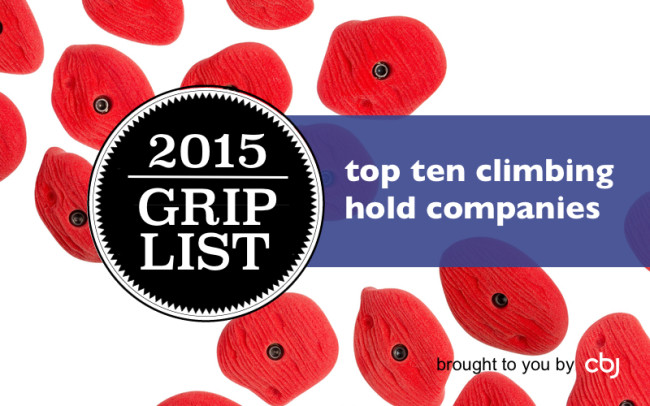
CBJ collected votes from North American routesetters for our second annual survey of the most popular climbing hold companies. The result is the 2015 Grip List. Without further ado, starting at number ten:
Click or scroll down to see the awardees:
Atomik – Climb-it – eGrips – Element – Enix – Kilter – Kingdom – So iLL – Teknik – Thrive
10. eGrips
Since 1996
eGrips has been producing classic shapes that have transcended the merely functional to become true pieces of artwork. eGrips shaper, Ty Foose, not only changed the way climbers move on plastic he also changed the way shapers morph foam blanks into textured hand and foot grips. With his eye for meticulous detail and originality, Foose and his team of shapers have created some of the most landmark shapes since the Pusher Boss. The iconic shapes of the Bubble Wrap and Myorcan have become so indispensable it’s sad to think of a time before they existed.
A whole book could be written about eGrips and what they have brought to the indoor climbing scene and the Grip List voters agreed by voting them into 2nd place for All-Time Favorite hold company. Voters described eGrips as, “Timeless”, “Classic”, “Ground breaking”, and “A necessity for any gym”.
EGrips doesn’t show any sign of slowing down and they continue to be as innovative as they have always been.

9. Atomik
Training for climbing is starting to take off in American climbing gyms and
Atomik, which has been at the forefront of training specific holds since 2002, continues to provide the tools that climbers need to improve. Their release of the Bombs was revolutionary and is now considered mandatory
training equipment for any respectable climbing gym (and is now copied by many of the top hold makers).
They’ve become known for their training holds but Atomik has one of the more diverse hold selections on the market and is a one-stop shop for reasonably priced basic shapes that last. With their in-house pouring and shaping they can quickly bring to market any idea and whim they desire which makes for a unique line of holds.
Peter George, setter at Texas Rock Gym, sums up Atomik by saying, “Simple affordable holds that are a pleasure to set with and a pleasure to climb on”
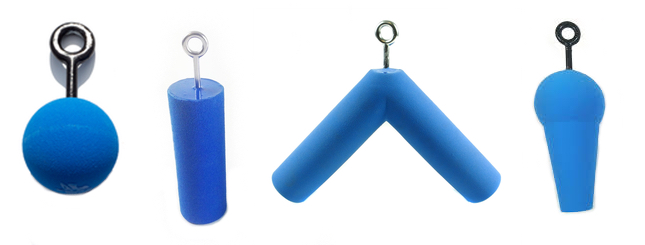
8. So iLL
The Chancellor brothers changed the way setters do their job when they brought their unique and distinctive style to the world of climbing holds. No other hold company has had more impact on the setting scene than
So iLL. They were the first, and still one of the few, companies to embrace the indoor climbing world as a thing unto itself that should be respected as such. Kevin Goradia, Owner and setter at Crux Climbing in Austin agrees and makes a nod to artistic shaping genius Jason Kehl, by saying, “Jason’s shapes really pushed the hold industry forward.”
So iLL isn’t stopping at only selling climbing holds. They’ve branched out to include chalk, climbing ropes, crash pads, bags, and even quick draws for climbing gyms. They are truly attempting to become the single source for all your indoor climbing needs.
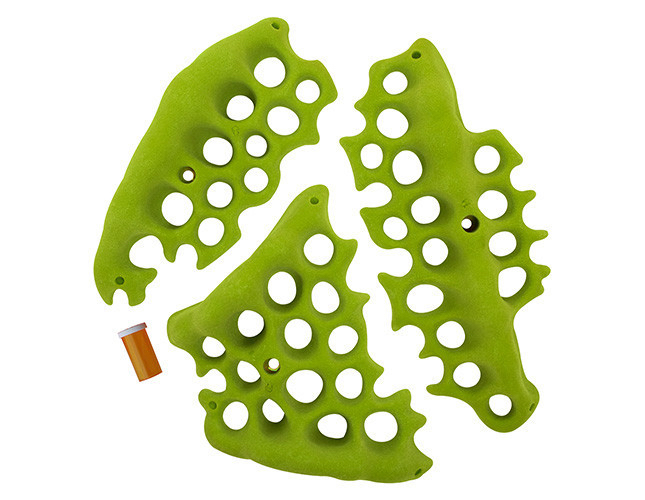
7. Enix
“Their Cobbles, Medium Slopers, and new crimp sets have created some awesome climbs,” said Aubrey Wingo, a routesetter at Boulder Rock Club. “I also have to add that their customer services has been nothing but astounding,” Wingo concluded.
Enix came out of the 2014 hold boom and has been making inroads by producing what Jonathan Marvel, setter at Focus Climbing Center, calls, “Simple, functional designs.” He added, along with many other setters: “Great texture, solid holds. Best pinches and slopers out there.”
Nick Steele, a routesetter at Vertical World, echoed the thoughts of many voting setters by saying that Enix, “Advances the art of indoor bouldering and setting.”
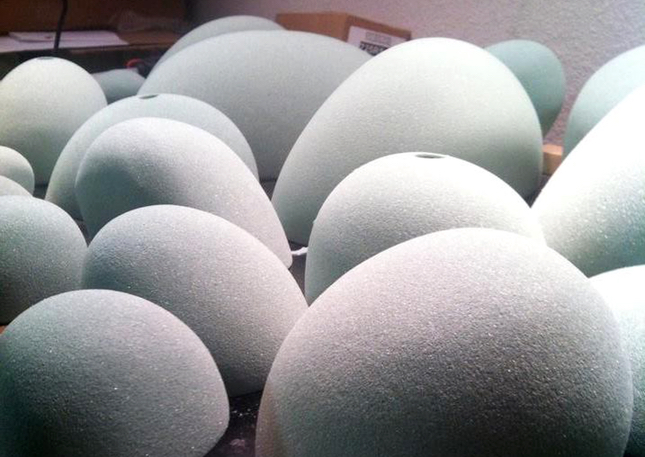
6. Thrive
Thrive is another one of the companies to successfully make it out of the fracas of last year’s climbing company boom. Dropping one spot on the Grip List from last year, Thrive continues to pump out quality shapes with what one setter called, “Superior quality polyurethane that holds up to the demands of a high traffic climbing gym.”
Setters also made numerous comments about the originality of the the Thrive line noting that their holds are, “…not derivative of any other company”; “…good selection of holds that are not similar to other companies” and “…different from all other companies … a must for every gym.”
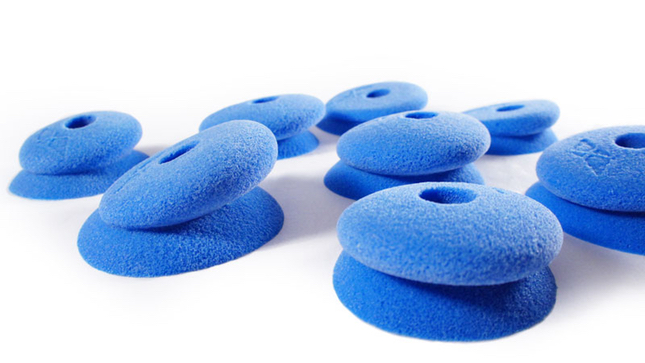
5. Climb-It
Making a first appearance on the Grip List was the So Cal-based,
Climb-It Holds. With a urethane upgrade and new shapes from Louie Anderson, Climb-It started a comeback in 2014 that setters are taking notice of. Most commenters noted Climb-It’s realistic shapes and textures that “… are realistic and relevant to what you would find shaped by Mother Nature.”
Dave Hamilton, Director of Operations at Climb-It, agrees and wants everybody to know that, “we are better than ever!”
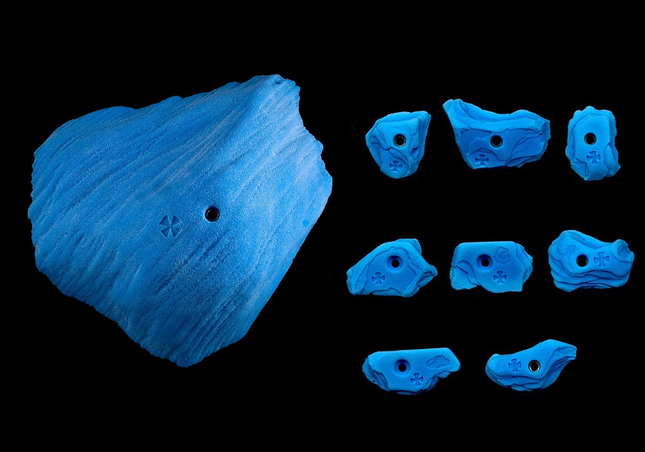
4. Element
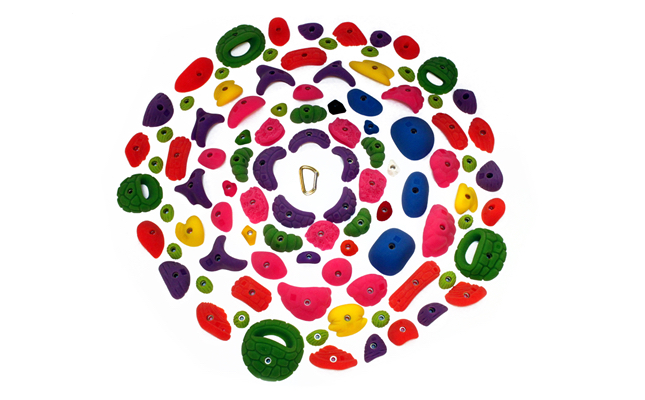 Element
Element received the most votes from Gym Managers and it’s easy to see why. According to this year’s voters, EC is delivering on what the owner, David Filkins describes as their “commitment to quality, customer service, fast shipping times, no color charges, and overall awesomeness.”
In fact, the most common praise we heard was for their excellent customer relations. One voter gushed: “Great service. Amazing service. Most greatest amazing service.” Storm Crane of Climb Upstate commented, “They truly support climbing gyms with amazing customer service and comp sponsorships.” Several others praised Element for the ease of ordering holds through their website.
Value was another factor that earned Element votes. “The price-point that Element provides can be pretty sensational. Gyms get 30% off year-round, but once every few months, EC has a sale for everyone that ranges from 35-40% off of all holds. Workhorse holds for sequence-dependent routes like their Isotopes set can come in at a bit over $2 a hold during these sales, which is a steal for a gym that has 30 or so 65-foot routes to keep up with,” said Matthew West, a routesetter at Upper Limits in Bloomington IL.
A good price point doesn’t mean they are skimping on quality. “For the cost, you cannot get better variety and texture,” commented Thomas Bick of the Parkway School District. Another routesetter said Element offers “…consistent quality holds delivered for a decent price.”
Element’s custom urethane earned praise for its durability and well-designed texture that setters like for its balance of grip and skin-friendliness. Element combines these attributes with a broad portfolio of creative shapes. Matt Salzman of the New Jersey Rock Gym said, “Element makes versatile holds which are durable and pleasing to climb on. The members of the gym should be attracted to the new holds as soon as they are put up on the wall, Element holds do that.”
Charles Curry of The Ledge at Pacific Health Club summed up many voters sentiments about Element with his assessment: “Value, quality, customer service.”
3. Kilter
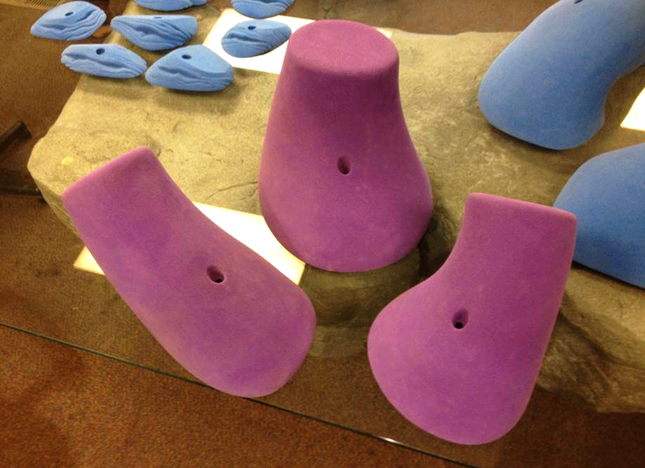
This Boulder-based grip maker made a huge splash when they came on the scene in 2013, taking the Grip List’s top honors last year. Ian Powell, the artist and iconoclast behind
Kilter is renowned for his artistic ability to create seemingly simple yet complex shapes that allow setters a freedom they didn’t have before.
Last year Kilter introduced the world to a full-blooded line of holds from feet to jugs. This year the team at Kilter stepped up their game and blew the minds of setters by releasing the Kaiju line. These holds, named after fictional Japanese creatures that, according to Wikipedia, “Usually attack a major city or engage another monster in battle.” These Kaiju holds, like the monsters they’re named after will, “play the roles of hero, villain, and force of nature”.
Head Setter at The Edge Rock Gym, Aaron Davis, had this to say after climbing on the Teagan Kaiju and the Winter Kaiju holds: “I have finally experienced what the buzz about Kilter is all about. Those two sets alone were unlike anything I had climbed on before,” he said. “There’s not a set out there that is truly like them. Both sets offer comfort, functionality, shock value, endless possibilities of incredibly fun movement.”
Even hold shapers from other companies can’t help but admire the creativity of the man behind Kilter. “Ian ‘MF’ Powell is the best shaper in the game,” said Peter Juhl, shaper and owner of Urban Plastic.
2. Teknik
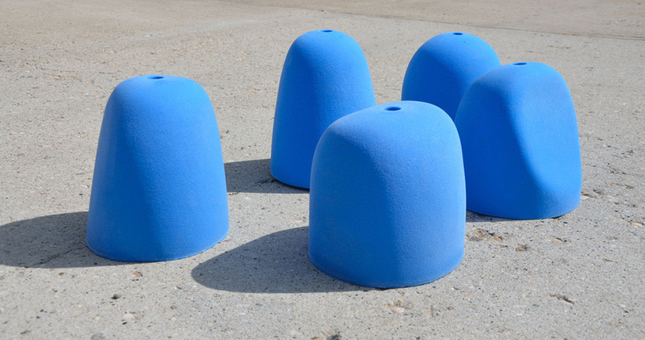
Coming in at second place on the Grip List is the venerable hold maker,
Teknik. This Canadian hold company has been producing climbing holds since 1999, and in that time they have become, for many setters, the standard bearer for what climbing holds should look like.
Chris Bersbach, Head setter at SLO Op Climbing commented, “Teknik’s shapes are the baseline against which I judge other hold companies. I could set a whole gym using only Teknik holds, and I definitely cannot say that about any other company out there today.”
From its beginning, Teknik has focused on providing clean and simple shapes. You won’t find real rock texture in any of their 128 sets of holds. What you will find is smooth shapes that have become the go-to-holds for route setters around the world.
“The simplicity, aesthetics and ergonomics of these holds is unmatched,” said Blake Green, Head setter at Climb Nashville. “If good routesetting is effectively creating something that people read to move up the wall, then these holds are like having perfect handwriting.”
In addition taking silver as this year’s favorite hold company, Teknik was voted as routesetters’ All Time Favorite hold company by a stunning margin, taking in three times as many votes as the runner up. This may not come as much of a surprise since Teknik has been producing ultra classic shapes for 16 years. Seth and Zoë Johnston have shaped nearly every hold in the Teknik line. They do not regularly hire out their shaping like other grip makers, and even though many of their shapes are basic in nature, they are rarely copied by other shapers. Whether this is out of respect or a reality that no one can improve upon the shape is up for debate.
What is known is that setters can’t get enough of Teknik. “I love pretty much every hold they make. There’s no other hold company I can say that about,” said Keith Morton, Setter and Manager at Peak Experiences.
1. Kingdom
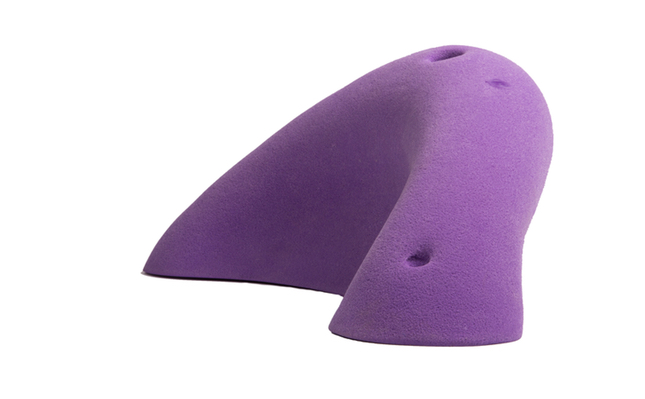
When we asked the setters of North America what holds they like most in 2014, their answer was, unequivocally, Kingdom.
Kingdom Climbing came on the scene last year with “holds that pretty much blew everyone minds,” said one voter. They made their debut by actualizing an idea many setters have dreamed of: a routesetting competition. This took the form of the wildly popular
Kingdom Games which served double duty as marketing stunt and community gathering.
But it wasn’t marketing stunts that got the attention of routesetters; it was their bold and creative shapes along with some of the largest grips on the market. Many of their shapes are absolute originals like their full line of Dragon Balls and Chickens Heads, which received frequent praise from setters. Their Wafer set also received many mentions for the line’s aesthetics and usability.
Mark Melendez, Head setter at Garden State Rocks in Morganville, NJ said of Kingdom, “Their holds set themselves. If you [have] ever see holds on the wall that Kingdom produced, you just have to climb on it. They’re fun to set with and fun to climb on. I think that’s the ultimate goal, that they’re enticing for the climber as well as the routesetter.”
Mark Mercer, Head setter at Aiguille Rock Gym in Orlando Florida agrees. “For a new company, their intro line of holds rivals most companies that have been around for years,” he said.
Another winning feature of Kingdom was their extensive themes. A number of their shapes, like the Dragon Balls, come in what many setters called “families” which are made up of up to 32 similar shapes. Anthony Hedberg, a Setter and General Manager at Momentum Climbing commented, “Most hold companies just make 5 to 8 holds in a ‘family’ meaning you will have to use duplicate holds on most problems, whereas Kingdom has made enough for an entire route, so you never see the same hold twice.”
Overall, setters just love the shapes. “The shapes are really versatile, visually striking, ergonomic, durable, and most importantly fun to climb on,” summed up Brian Sweeney routesetter and Manager of Basecamp at the Whitney Peak Hotel.
The newly formed Kingdom Climbing brand received honorable mention on last year’s Grip List. At that time we speculated that “The Kingdom team is now stronger and has a very good shot at blowing the roof off of gyms.” It seems Kingdom was not only ready to blow off the roof, they were ready to take on the entire industry.
 By Tino Fiumara
The emergence of 24-hour-access bouldering facilities has followed the pattern of the Field of Dreams: if you build it, they will climb. From the for-profit to the co-op models, 24-hour gyms have found early success and have discovered that more people want to climb at odd hours than they ever would have guessed. There are many climbers that are in school or work non-standard hours, contributing to a sizable demographic of potential customers. Ultimately the data speaks for itself, as every for-profit 24-hour bouldering gym in the US has expanded to multiple locations.
By Tino Fiumara
The emergence of 24-hour-access bouldering facilities has followed the pattern of the Field of Dreams: if you build it, they will climb. From the for-profit to the co-op models, 24-hour gyms have found early success and have discovered that more people want to climb at odd hours than they ever would have guessed. There are many climbers that are in school or work non-standard hours, contributing to a sizable demographic of potential customers. Ultimately the data speaks for itself, as every for-profit 24-hour bouldering gym in the US has expanded to multiple locations.
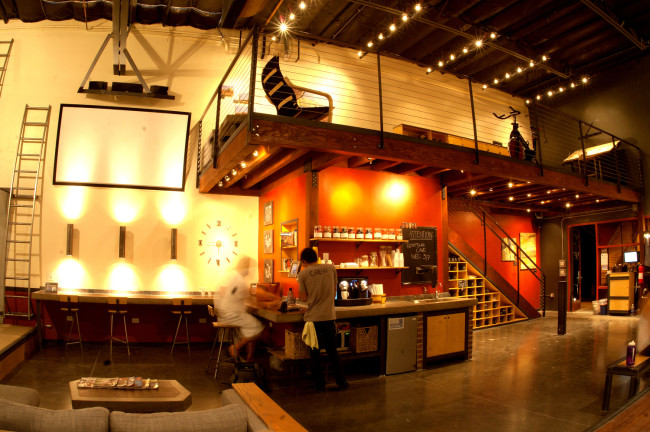
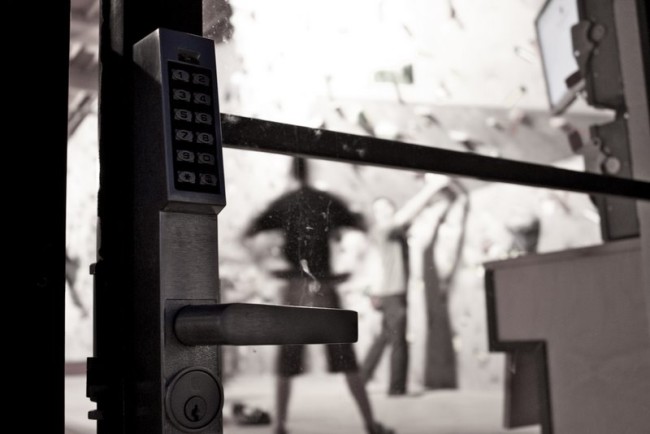





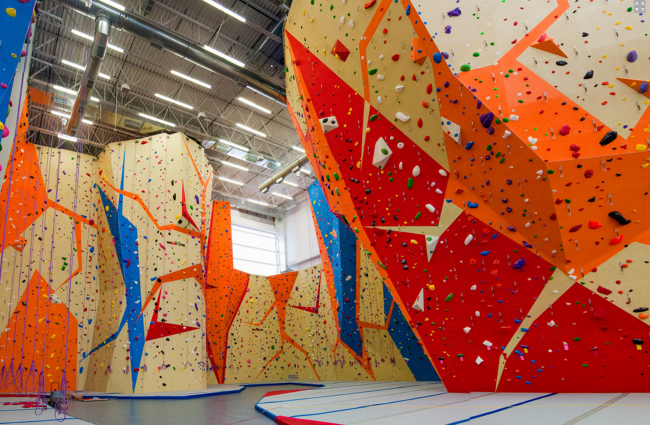 FOR IMMEDIATE RELEASE
Boulder, Colorado
January 13, 2015
USA Climbing Awards the 2015 SCS Youth National Championships and 2015 Adaptive National Championship to Stone Summit Climbing and Fitness at their new Kennesaw location.
USA Climbing, the United States National Governing Body for the sport of competition climbing announced today that it has awarded the 2015 Sport Climbing Series (SCS) Youth National Championships and the 2015 Adaptive National Championship to Stone Summit Kennesaw Climbing and Fitness.
The SCS Youth National Championships will be hosted and managed by USA Climbing and the team at Stone Summit from July 9-12, 2015. This event brings together over 450 of the best youth (age 19 and younger) Sport and Speed climbers in the United States to compete for a coveted spot on the US Youth Climbing teams and the title of National Champion. USA Climbing and Stone Summit will also host the Adaptive National Championship on July 17, 2015: the event in 2015 will be the second time that this event has ever happened. It’s estimated that over 75 of the best Adaptive climbers in the country will attend.
Stone Summit Co-Owner Daniel Luke said, “We are proud and excited to host the 2015 SCS Youth National Championships and 2015 Adaptive National Championship in our new Kennesaw facility. This year’s competitive field of climbers is particularly strong and we are looking forward to seeing the Nation’s top climbers compete on our new walls. In addition to the new terrain, Stone Summit Kennesaw will be a great venue for the competitors’ families as it is surrounded by a plethora of dining and entertainment options.”
“We have developed an incredibly good relationship with the team at Stone Summit over the last few years.” said USA Climbing CEO Kynan Waggoner. “These events are a great opportunity for USA Climbing to draw eyes to one of the biggest and best new climbing facilities in the country. With the addition of a 15m IFSC Speed Wall and their support of the Adaptive movement, it’s even more evident that Stone Summit would like to see competition climbing grow to new heights within the United States.”
FOR IMMEDIATE RELEASE
Boulder, Colorado
January 13, 2015
USA Climbing Awards the 2015 SCS Youth National Championships and 2015 Adaptive National Championship to Stone Summit Climbing and Fitness at their new Kennesaw location.
USA Climbing, the United States National Governing Body for the sport of competition climbing announced today that it has awarded the 2015 Sport Climbing Series (SCS) Youth National Championships and the 2015 Adaptive National Championship to Stone Summit Kennesaw Climbing and Fitness.
The SCS Youth National Championships will be hosted and managed by USA Climbing and the team at Stone Summit from July 9-12, 2015. This event brings together over 450 of the best youth (age 19 and younger) Sport and Speed climbers in the United States to compete for a coveted spot on the US Youth Climbing teams and the title of National Champion. USA Climbing and Stone Summit will also host the Adaptive National Championship on July 17, 2015: the event in 2015 will be the second time that this event has ever happened. It’s estimated that over 75 of the best Adaptive climbers in the country will attend.
Stone Summit Co-Owner Daniel Luke said, “We are proud and excited to host the 2015 SCS Youth National Championships and 2015 Adaptive National Championship in our new Kennesaw facility. This year’s competitive field of climbers is particularly strong and we are looking forward to seeing the Nation’s top climbers compete on our new walls. In addition to the new terrain, Stone Summit Kennesaw will be a great venue for the competitors’ families as it is surrounded by a plethora of dining and entertainment options.”
“We have developed an incredibly good relationship with the team at Stone Summit over the last few years.” said USA Climbing CEO Kynan Waggoner. “These events are a great opportunity for USA Climbing to draw eyes to one of the biggest and best new climbing facilities in the country. With the addition of a 15m IFSC Speed Wall and their support of the Adaptive movement, it’s even more evident that Stone Summit would like to see competition climbing grow to new heights within the United States.” 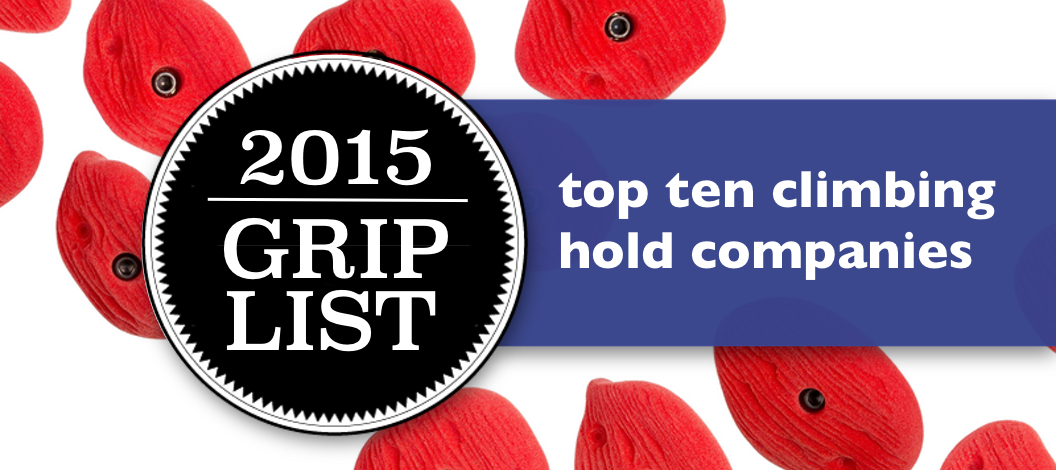
 CBJ collected votes from North American routesetters for our second annual survey of the most popular climbing hold companies. The result is the 2015 Grip List. Without further ado, starting at number ten:
Click or scroll down to see the awardees:
CBJ collected votes from North American routesetters for our second annual survey of the most popular climbing hold companies. The result is the 2015 Grip List. Without further ado, starting at number ten:
Click or scroll down to see the awardees:







 This Boulder-based grip maker made a huge splash when they came on the scene in 2013, taking the Grip List’s top honors last year. Ian Powell, the artist and iconoclast behind
This Boulder-based grip maker made a huge splash when they came on the scene in 2013, taking the Grip List’s top honors last year. Ian Powell, the artist and iconoclast behind  Coming in at second place on the Grip List is the venerable hold maker,
Coming in at second place on the Grip List is the venerable hold maker,  When we asked the setters of North America what holds they like most in 2014, their answer was, unequivocally, Kingdom.
When we asked the setters of North America what holds they like most in 2014, their answer was, unequivocally, Kingdom.

